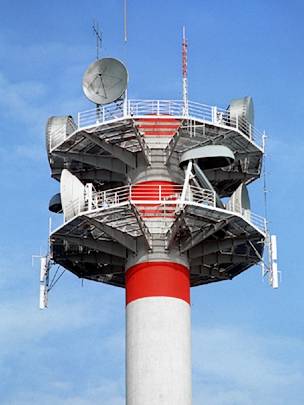FCC Licensing and Engineering

Welcome to the June 2009 issue of GL's consulting newsletter. In this issue, we focus on Federal Communications Commission's (FCC) licensing and engineering aspects. One of the key functions of FCC is to insure that radio/wireless communications services of various operators operate free of interference from one another. Parameters that influence potential interference include frequency of operation, guard band, modulation techniques, RF output power, receiver sensitivity, emission designators, antenna orientation, distance to adjacent repeaters, path profile, etc. Operators need to insure that technical parameters of radio systems fall within specific FCC guidelines.
For example, FCC has allocated 50 MHz bandwidth for public safety applications in 4.9 GHz band spread over 18 channels, ranging from 1 MHz to 5 MHz in channel width. Types of licenses one can obtain in this band are general, primary, secondary, permanent fixed point-to-point, etc. Approach to obtaining an FCC license will depend on the application. Therefore, understanding the needs, technology and bandwidth requirements is important.
Any agency licensed by the FCC will have the right to use the entire 4940-4990 MHz frequency band. Therefore, interference is a matter of concern in this band due to multiple agencies sharing the spectrum in a given area. The interference can, however, be minimized or possibly be even eliminated with proper frequency planning, system design, and use of good directional antennas. Generally, multiple agencies work together in finding a technical solution to resolve interference issues, if any, and many jurisdictions have set up Regional Planning Committees to coordinate frequency planning.
Obtaining a license is a pre-requisite to commence services in licensed frequency bands and it is a highly specialized task requiring tremendous amount of engineering. Operators need to submit a variety of information and supporting documents to FCC. They include:
- FCC forms such as FCC 601 and schedules
- Engineering exhibits, contour study etc.
- Frequency coordination, notifications and interference analysis
- Waivers request with justification
- Letter of concurrence for frequency sharing
GL, since its inception in 1986, has provided technical and engineering support to obtain FCC licenses for a large number of commercial, cellular, transit, and public safety land mobile radio operators nationwide. Applications include point-to-point line of sight, cellular/PCS, Wi-Max/ Wi-Fi/WLAN. Examples of our support services are:
- FCC applications 601 and exhibits filings on-line at the FCC's Universal Licensing System
- Engineering exhibits and waivers request for justification of spectrum usage
- Narrowband implementation planning of T-band to meet the FCC mandate of 2013
- Service area boundary contours development using Carey Model R-6406 and TV Model R-6602 propagation curves for 470-512 MHz.
- Other frequency bands for radio applications are 700 MHz, 800 MHz, 900, MHz, Cellular and PCS bands
- Wi-Max system design services ranging from licensed to unlicensed spectrum (700 MHz to 6 GHz) and FCC licensing as applicable
- FCC application parameters to APCO for frequency coordination at on-line site SpectrumWatch
- FCC re-banding of 800 MHz NPSPAC to create a more efficient public safety spectrum
For a complete list of GL's services, please click here.
GL has also developed in-house a variety of design tools that are necessary for analysis and contour studies as per FCC rules and regulations 47 CFR (Code of Federal Regulations).
Customer Benefits
GL's cost effective expertise has greatly benefited a large number of customers who could not otherwise afford to hire highly specialized people with extensive telecom and microwave experience, and an indepth knowledge of FCC guidelines to obtain FCC Licenses.